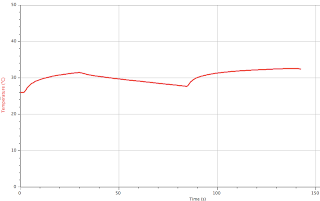Epithelial tissues: Responsible for covering all free body surfaces
- Covers the organs
- Forms the inner lining of the body cavities and lines our hollow organs.
- The basement membrane holds epithelial tissue to underlying connective tissue.
- Lack blood vessels
- Tightly packed
Epithelial tissues are classified by shape and the number of layers of cells.
Squamous: Thin, flattened cells
Cuboidal: Cubelike cells
Columnar: Elongated cells
Simple:Single layer of cells
Stratified:2 or more layers
Simple Squamous-Single layers of thin, flattened cells. They fit tightly together and their nuclei are usually broad and thin.
-Common at sites of diffusion and filtration.
-Lines the alveoli of the lungs
-Forms the walls of capillaries, lines the blood and lymph vessels, and covers membranes that line body cavities
Simple Cuboidal-Single layer of cube-shaped cells which usually have a central location for the spherical nuclei.
-Lines the follicles of the thyroid gland, covers the ovaries, and lines the kidney tubules and ducts of glands
*salivary glands
*pancreas
Simple Columnar-Single layer of elongated cells with nuclei that are at the same level near the basement membrane.
-Cells can be ciliated or non ciliated.
-They move constantly
Psuedostratified Columnar Epithelium-Appear stratified or layered, but really aren't.
-This layered effect occurs because the nuclei are at 2 or more levels in the aligned cell row.
-These cells vary in shape and reach the basement membrane.
-These types of cells have cilia
Stratified Squamous Epithelium-Many layers of cells, which make the tissue relatively thick.
-Cells nearest the free surface get flattened the most.
**Fun Fact-the epidermis is stratified squamous epithelium.
Stratified Cuboidal Epithelium-2-3 layers of cuboidal cells that form the lining of a lumen.
-Provides more protection for cells
-Lines the larger ducts of the mammary glands, sweat glands, salivary glands, and pancreas
Stratified Columnar Epithelium-Made of several layers of cells
-Elongated cells
-Found in part of the male urethra and ductus deferens.
-This layered effect occurs because the nuclei are at 2 or more levels in the aligned cell row.
-These cells vary in shape and reach the basement membrane.
-These types of cells have cilia
Stratified Squamous Epithelium-Many layers of cells, which make the tissue relatively thick.
-Cells nearest the free surface get flattened the most.
**Fun Fact-the epidermis is stratified squamous epithelium.
Stratified Cuboidal Epithelium-2-3 layers of cuboidal cells that form the lining of a lumen.
-Provides more protection for cells
-Lines the larger ducts of the mammary glands, sweat glands, salivary glands, and pancreas
Stratified Columnar Epithelium-Made of several layers of cells
-Elongated cells
-Found in part of the male urethra and ductus deferens.









